Welcome to Part 1 of our CareersHub series, where you can learn a few handy tips about what a careers site is, what tools to use and how to create one.
Do you want to build a careers site but are worried about the challenges of costs, maintenance, and skills? Don’t be! It’s actually pretty straightforward to do; there are plenty of content management tools that can help you start building today –– in NO time and with NO coding.
By building a careers site yourself (I promise, even you can do it), you can unleash your creativity and have complete ownership of the page. No support from design or development teams and full control over one of the most effective tools available to HR teams.
This article will explain how you can get started. It also has a few handy tips to maximize the power of your careers site.
But what is a careers site?
A careers site is an area dedicated exclusively to job vacancies. It can be a micro or hybrid site connected with external job boards, but more often than not, it’s a single page on your company’s website dedicated to your open vacancies.
Typically, companies add a direct link to their careers page in the footer of their homepage. Potential candidates can then quickly see if you’re currently hiring for a role suitable for them. We recommend doing the same to ensure potential candidates can easily find your career site.
Candidates will also be looking at your careers site to find out a little more about your company and culture. A careers site should always reflect your company and branding. It would be surprising for a visitor to be directed to a page with a different look and feel –– they’d like to ask themselves, “Is this still the same company?” The appearance of a careers site does, of course, depend entirely on your company.
Great, but what are the benefits of having a careers site and how do I achieve them?
A careers site is arguably the most powerful tool in an HR toolkit –– yet often the most overlooked. Fundamentally, a careers site (also known as a careers page) is just a landing page on a company’s website where job vacancies and employee-related information can be found. Doesn’t sound too exciting, right?
But consider what this means: free creativity and an opportunity to showcase what it’s like to work for your company.
The primary advantage of having a careers site is to improve candidate conversion rates and hire better talent. This is number one. However, getting there requires focus and work on two areas –– two areas that also bring added benefits.
Employer branding
A careers site is a playground for employer branding. It’s one of the only places where you can sing about your teams, your culture, and the employee experience at your company. It’s where you can make your employer branding shine.
A careers site is the go-to page for potential employees curious about who you are as a company; so get creative! Before a potential candidate hits send on their application, they’ll be investigating whether your company culture matches their values. They’ll want to know what your mission is, who’s on your team, what you stand for, and what perks and benefits you offer.
Quick tip: Add employer testimonials and a company video to your careers site!
Employer branding is important; employer branding on your careers site is critical. According to data from companies that use our Recruitee (by Tellent) ATS and can track the full recruitment pipeline, more than 60% of their applicants applied via their company site –– that’s more than one in two potential candidates not only applying but evaluating a company from their careers site.
And if you consider that a staggering 74% of job seekers are more likely to apply for a job when a company manages its employer branding — it’s something that shouldn’t be overlooked.
Looking for some help to optimise your employer branding? Discover our free employer branding checklist!
Google ranking and SEO
If done correctly –– and it’s important to do it correctly! –– a careers site can work wonders for your company’s SEO. If you know and understand SEO, the same tricks and standards should be applied to your company’s site.
You want to make sure the careers site has all the necessary keywords, your images and meta tags are SEO friendly and your meta description is optimized, to ensure search engines can easily index the page. This is important as the better indexed your careers site the higher you’ll rank on search engines, improving your reach for potential candidates.
Dive deeper into SEO to understand it better and learn more about built-in analytics as an effective way to track key metrics and website traffic.


